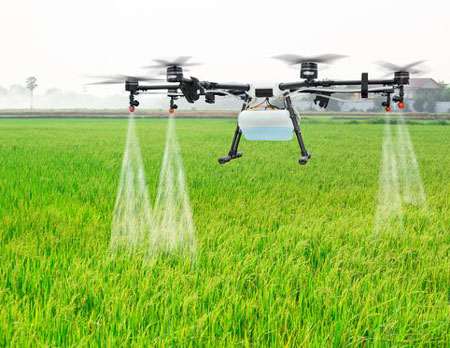Brinjal
Powdery Mildew

Leveillula taurica
Fungal Disease
Introduction
Leveillula taurica, also known as Internal Powdery Mildew, is a fungal disease affecting a wide range of crops, particularly in hot and dry regions. This pathogen is highly adaptable and has been found in tropical and subtropical climates, attacking over 1,000 plant species across 74 botanical families. It primarily affects Solanaceae crops like chili and tomato but is rarely seen on cucumber. The disease occurs in both open fields and protected environments such as greenhouses.
Symptoms
- Initially appears as pale green spots on lower leaves.
- Spots are rounded to angular, turning yellow over time.
- Infected areas develop brown micro-lesions, eventually leading to necrosis.
- Severe infections cause leaflet and leaf death, but the leaves do not fall off.
- No visible symptoms appear on stems, flowers, or fruits.
Signs of Infection
- A powdery white fungal growth (sporulation) appears on the underside of leaves.
- The fungus produces elongated conidiophores bearing lanceolate conidia.
- Under humid conditions, sporulation may occur on both sides of the leaf.
Favorable Conditions for Disease Development
Temperature & Humidity
- Prefers hot and dry climates but can adapt to various conditions.
- Optimum temperature: 26°C with 70–80% humidity.
- Can infect between 10°C and 33°C, given sufficient moisture.
- Alternating hot, dry days and cool, humid nights encourage fungal growth.
- Dew formation on leaves increases infection risk.
Infection & Sporulation
- Conidia germinate at >40% relative humidity.
- Fungal spores penetrate the leaf directly or through stomata.
- Colonization occurs intercellularly in the leaf mesophyll.
- Sporulation begins after ~20 days, forming spores on stomata.
Management Strategies
Cultural Practices
✔ Avoid plant stress – Ensure proper irrigation and balanced fertilization.
✔ Increase plant spacing – Prevent overcrowding to improve air circulation.
✔ Prune infected leaves – Reduce fungal spread.
✔ Practice crop rotation – Avoid continuous planting of Solanaceae crops in the same field.
✔ Sanitation – Remove infected debris from the field.
Chemical Control
✔ Use fungicides like sulfur, azoxystrobin, or difenoconazole as preventive measures.
✔ Apply biological control agents like Trichoderma to suppress fungal growth.
Conclusion
Leveillula taurica poses a serious threat to crops in warm, dry regions. Proper cultural practices, environmental management, and fungicidal applications are essential for disease prevention and control. By understanding the favorable conditions and infection cycle, farmers can take timely action to protect their crops from severe damage.




